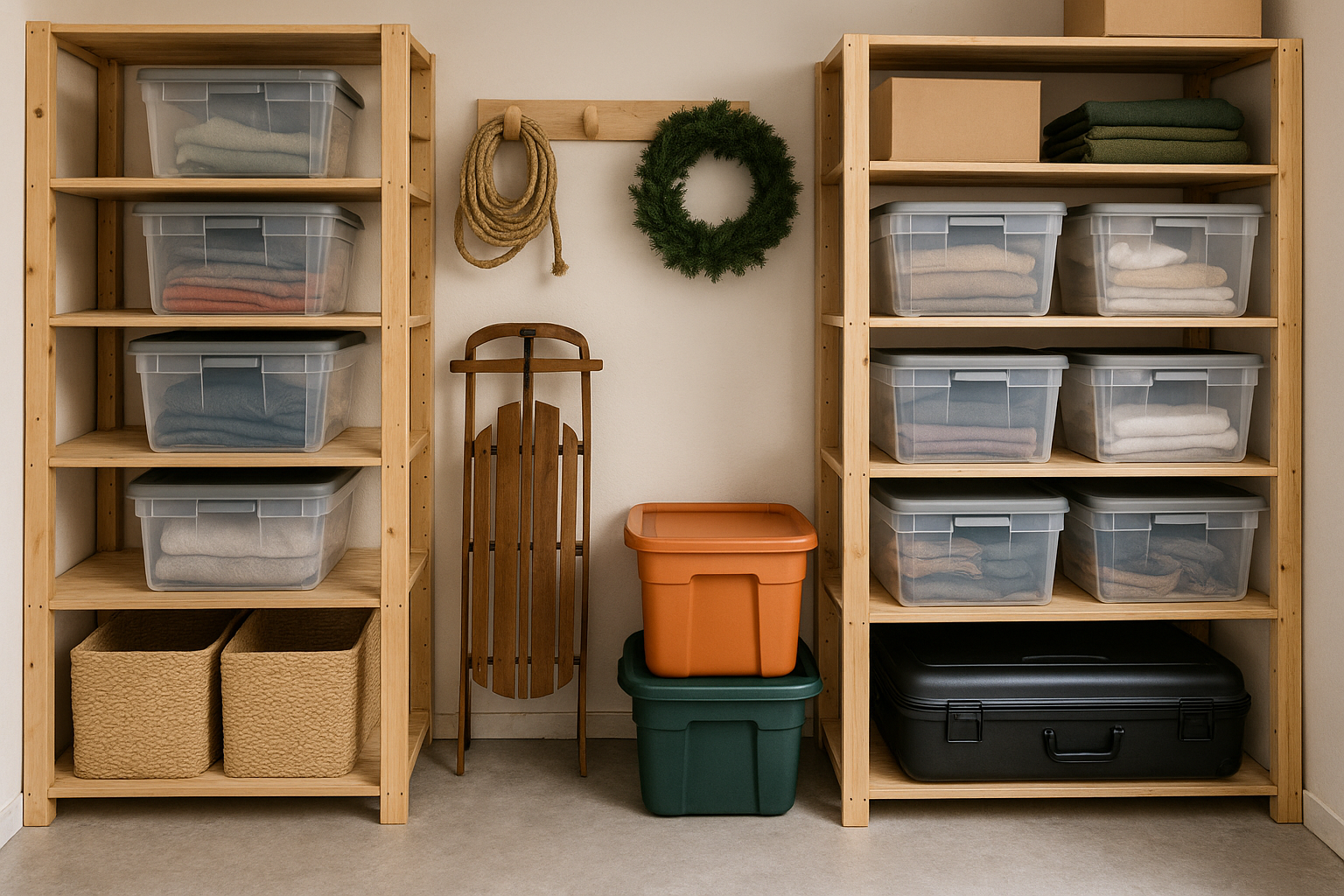Seasonal items—such as holiday decorations, winter coats, summer sports gear, and festive dinnerware—often take up a surprising amount of space in our homes. While these belongings are valuable and bring joy during specific times of the year, they can become a source of clutter when not in use. Properly organizing seasonal items ensures they are protected, easy to find, and out of the way during the off-season.
Creating an effective storage system for seasonal items is about more than just stacking boxes in the attic. It requires planning, thoughtful organization, and using the right storage methods to preserve your belongings while maximizing space.
Understanding the Categories of Seasonal Items
Before you begin organizing, it’s important to identify exactly what qualifies as a seasonal item in your household. This can include:
- Holiday decorations (Christmas trees, ornaments, lights, Halloween costumes).
- Seasonal clothing (winter coats, summer dresses, rain gear).
- Outdoor equipment (ski gear, beach chairs, camping supplies).
- Special tableware (festive plates, glasses, serving pieces).
- Garden tools used only during certain months.
Categorizing items from the start makes it easier to plan storage zones and avoid mixing unrelated items together.
Decluttering Before Storing
The first step to organizing seasonal items is decluttering. Every year before storing them away, take time to assess each piece:
- Is it still in good condition?
- Did you use it this year?
- Does it still fit your style or needs?
Donate or sell items you no longer want. Broken or unusable items should be recycled or discarded. This reduces storage needs and makes it easier to find the items you truly value.
Choosing the Best Storage Locations
Where you store seasonal items matters for both preservation and accessibility.
Attic or Loft
These spaces are great for lightweight, rarely used items. However, avoid storing delicate fabrics or temperature-sensitive items in areas without climate control.
Basement
Basements offer generous storage space but can be prone to moisture. Use airtight plastic bins to protect contents from humidity.
Garage or Shed
Perfect for outdoor gear, sports equipment, and tools. Use shelving units to keep items off the floor.
Closets
For clothing and smaller décor, a dedicated closet can keep seasonal items accessible without cluttering main living areas.
Using the Right Storage Containers
The container you choose is just as important as the location.
- Clear plastic bins – Allow you to see contents without opening them.
- Vacuum-sealed bags – Ideal for bulky clothing like coats or blankets, reducing volume significantly.
- Heavy-duty totes – Protect fragile items from damage and pests.
- Cardboard boxes – Acceptable for lightweight items but should be avoided in damp areas.
Label every container clearly with both its contents and the season it belongs to.
Organizing by Season and Category
Grouping items by season and category makes retrieval faster and less frustrating.
- Keep winter holiday decorations together.
- Store summer sports gear in one section.
- Group seasonal clothing by family member.
Color-coding storage bins can also help—red and green for Christmas, orange for fall décor, blue for summer items, and so on.
Protecting Fragile Items
Seasonal décor often includes delicate pieces like glass ornaments or ceramic figurines. Wrap these in bubble wrap or acid-free tissue paper and store them in divided boxes to prevent shifting and breakage. For extra protection, place these boxes inside sturdier containers.
Maximizing Vertical Space
Many storage areas have unused vertical space that can be optimized.
- Install shelving units in the garage or basement.
- Use wall-mounted hooks for items like wreaths or sports equipment.
- Hang seasonal clothing in garment bags on a high rod in the closet.
By going vertical, you free up floor space and keep items organized.
Rotating Items Seasonally
A great way to keep seasonal items accessible is to rotate them based on the time of year. For example, in the summer, store winter coats and holiday décor in the back or higher shelves while keeping summer gear at the front. When seasons change, switch their positions. This system saves time and prevents having to dig through unrelated items.
Maintaining an Inventory
Keeping an inventory of your seasonal items may seem like extra work, but it pays off when you’re searching for something specific.
- Create a simple spreadsheet listing the item, location, and condition.
- Use a labeling system with numbers that correspond to your inventory list.
- Consider using storage apps that allow you to track contents with photos.
This approach is especially useful for large households or those with extensive seasonal décor.
Storing Seasonal Clothing Properly
Clothing storage requires special attention to prevent damage.
- Clean all garments before storing to prevent stains from setting.
- Use cedar blocks or lavender sachets to deter moths.
- Fold heavy items like sweaters to avoid stretching.
- Store in breathable garment bags rather than sealed plastic to prevent moisture buildup.
Keeping Seasonal Items Accessible
Even though seasonal items are stored for part of the year, they should still be easy to reach when needed. Avoid stacking bins so high that retrieving one becomes a hassle. Use sliding storage racks or labeled shelving so each item has its place and can be accessed without moving multiple containers.
Reviewing and Updating Annually
At least once a year, review your seasonal storage. Discard broken or outdated items, reorganize as needed, and ensure that storage methods are still protecting your belongings effectively. Doing this regularly prevents your storage from becoming a cluttered mess over time.
Final Thoughts
Organizing seasonal items is about more than just saving space—it’s about creating a system that keeps your home tidy and functional year-round. By decluttering, choosing the right storage locations and containers, grouping items thoughtfully, and maintaining a seasonal rotation, you can enjoy your festive and seasonal belongings without letting them overwhelm your living space.
With the right approach, your seasonal storage will not only protect your items but also make it a joy to bring them out when their time of year arrives.

